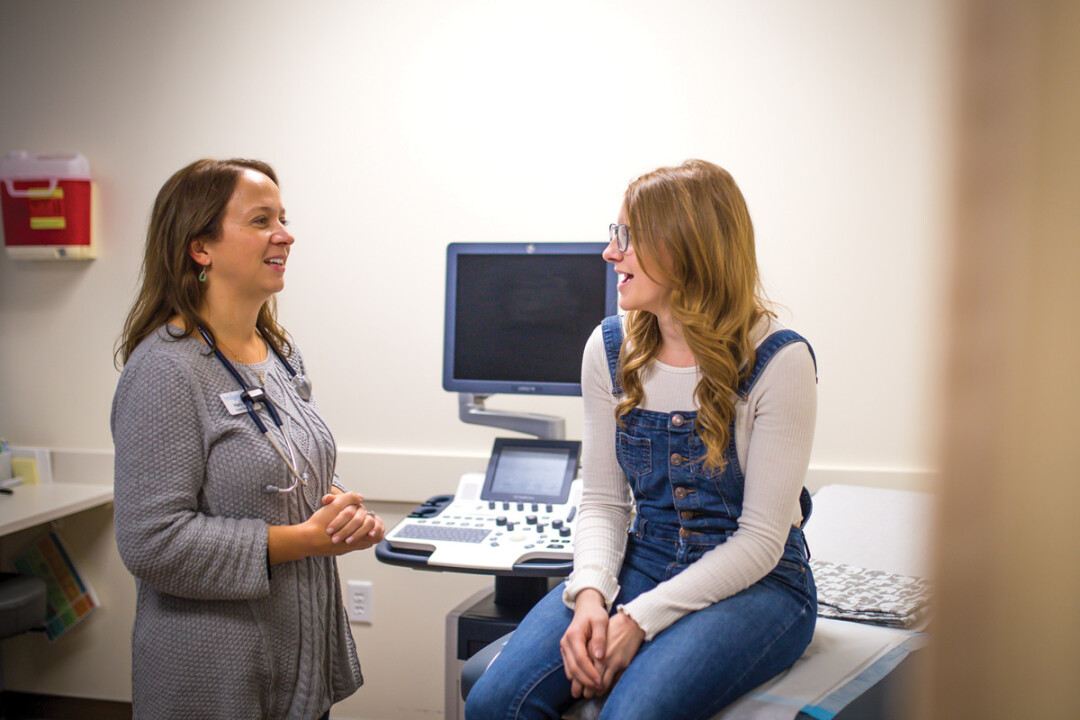Keeping Sex Healthy in the Gallatin Valley

Safety first Teamwork second!
As far as anecdotal advice goes, this one has always stuck because of the nature of its versatility. It’s one of those phrases that transcends time and circumstances. As we head into this Season of Love, this month-long collective obsession with all things heart-and-booty shaped, peach and eggplant emojied, red and glitter-covered, fleshy and flashy - THIS phrase should be at the forefront of your mind. Why, you ask? The answer may surprise you.
Getting Down to the Nitty Gritty
Gallatin County, the state of Montana, and the U.S. are all seeing spikes in reports of STI’s, specifically Gonorrhea, Chlamydia, and Syphilis. Just to give you an idea - over the course of 2019, 49 cases of Gonorrhea were reported to the Health Department in Gallatin County and a total of 1,563 cases were reported across the State of Montana, up 32% from the 1,179 cases reported in 2018. Almost 5,000 cases of Chlamydia were reported in 2018, 545 of which came from Gallatin County, and 2019 is on track to be even higher. It’s the largest these numbers have been in Montana in 40 years. Luckily, these infections can be avoided by using condoms, and treated with prescription medication, but can also come with complications if not caught and treated in time.
Knockin’ Boots
State and Government Health Officials assert that the rise in STIs is a direct result of Sexual Health Program defunding across the nation. Studies are showing that condom use is decreasing among vulnerable demographics, including young people, and drug use, poverty, and unstable housing is prevalent, which can all affect access to STI testing and care. They also pose that the rise in “anonymous sex,” or only knowing a sexual partner by their “social media” name via Facebook, Instagram, Tinder, Bumble, etc. has something to do with it, but studies of this correlation are still being developed. In conjunction with the emerging Sex-Positive Movement - “a social and philosophical movement that seeks to change cultural attitudes and norms around sexuality, promoting the recognition of sexuality (in the countless forms of expression) as a natural and healthy part of the human experience and emphasizing the importance of personal sovereignty, safer sex practices, and consensual sex (free from violence or coercion)” - these variables have produced a perfect storm of epidemic proportions that Public and State Health Officials haven’t seen the likes of in a long time.
Risky Business
Being “At-Risk” for STIs is inherent for anyone that engages in sexual activity, but the chances of obtaining an infection rises with different factors and variables within a person’s lifestyle choices; for example - how many partners one has had in the past year, if one uses intravenous drugs, or if one has been sexually assaulted recently, among many others. These factors also determine which STI test would be the best for your screening.
Who should be getting tested and when
(offered by the Montana State DPHHS Website on STD Prevention)
• All adults and adolescents from ages 13 to 64 should be tested at least once for HIV.
• Annual chlamydia screening of all sexually active women younger than 25 years, as well as older women with risk factors such as new or multiple sex partners, or a sex partner who has a sexually transmitted infection
• Annual gonorrhea screening for all sexually active women younger than 25 years, as well as older women with risk factors such as new or multiple sex partners, or a sex partner who has a sexually transmitted infection.
• Syphilis, HIV, and hepatitis B screening for all pregnant women, and chlamydia and gonorrhea screening for at-risk pregnant women starting early in pregnancy, with repeat testing as needed, to protect the health of mothers and their infants.
• Screening at least once a year for syphilis, chlamydia, and gonorrhea for all sexually active men - hetero, gay, bisexual, and other men who have sex with men (MSM). MSM who have multiple or anonymous partners should be screened more frequently for STDs (e.g., at 3-to-6 month intervals).
• Anyone who has unsafe sex or shares injection drug equipment should get tested for HIV at least once a year
Linked to that same website, is a website where you can find STI testing providers per town/city in Montana. Here in Gallatin County, we have access to several.
Bridgercare - 1288 N 14th St, STE 201, Bozeman - 406-587-0681 http://www.bridgercare.org/
Community Health Partners - 214 E Mendenhall, Bozeman, 406-585-1360 http://www.chphealthmt.org/
Community Health Partners, Belgrade - 19 E Main St., Belgrade, 406-924-5754 http://www.chphealthmt.org/
AIDS Outreach - 601 Nickles Drive, STE 2C, Bozeman, 406-451-5718 http://www.aidsoutreachmt.org/
Gallatin County Health Department - 215 W Mendenhall, Bozeman, 406-582-3100
Other resources in our community include:
ZoeCare - 2251 W Kagy Blvd, #2, Bozeman, 406-586-9444
Student Health Services, Strand Union Bldg, MSU, 406-994-2311 (students only)
Your Body is a Wonderland
So take care of it! One of the healthiest things to do for yourself is to know your STI status. The process is (mostly) painless, quick, and inexpensive! Here’s what an average visit to Bridgercare looks like for a first-time patient:
Check-in: The sweetest gals behind the glass greet you, take your name, walk you through the check-in process and give you paperwork to fill out. They will emphasize filling out the Sliding-Scale Income portion, to make your visit as affordable as possible. Medicaid and most insurances are accepted as well.
Visit: A super nice assistant will call you back, and after you hand her your health history form, she will weigh you, lead you to a room, take your blood pressure, and ask some very general questions.
One of the several doctors and nurse practitioners will come in, ask about your reason for visiting that day, go over your health history and risk factors, and determine what kind of test(s) you may need. Some of the testing that Bridgercare offers includes urine, blood, self-swabbing, oral swab, and regular or Rapid HIV testing.
After testing is conducted, you can wait 15 minutes for a Rapid HIV test in the exam room or have them contact you with the results. All other testing is sent out to a contracted lab, so results come back 24-72 hours, depending on the time and day of the week the
test was conducted. Appointment and testing usually takes less than an hour to complete at Bridgercare, and you are contacted via your preference with the results.
Positive Result: In the instance of a positive test result, you are contacted immediately. Treatment and counseling is offered, prescriptions are called to your pharmacy or available at Bridgercare depending on the patient’s circumstance, and the option is given for them to help you contact your sexual partner(s). Retesting is suggested after the course of medication to confirm success of treatment. All positive communicable disease results are given to the Health Department.
Push It, Push It Real Good
Stigmas get broken down by bringing issues that aren’t comfortable into the light and communicating about them. Living in the 2020s is a whole new decade, an era of acceptance, authenticity, exploration and discovery, and another level of awareness. A whole new chance to make things better. Knowledge is power, even if it feels weird to talk about. Going to get your test done to know your status is empowering. At Bridgercare, they call this type of appointment a “Peace of Mind” visit, and they encourage them. Push yourself one step further even, and communicate with your partner, (even if you’ve been in a monogamous relationship for a long time), about the last time each of you were tested. One step further, communicate with your best friend about their status, the last time they were tested. Your brother, sister, cousin - anyone you are comfortable and safe talking to about sexually-related things, or even science-related things. The CDC and State Health Officials are analyzing the STI statistics coming out of 2019, and will be releasing an STI Federal Action Plan early this year “to address and reverse the nation’s STD epidemic.” In the meantime, breaking the stigma down surrounding sexual health is directly related to lowering the number of cases of STIs, so start communicating! Safety first, teamwork second!
Special thanks to Stephanie McDowell for giving me information on Bridgercare, and the staff there for being so open during my visit! -MKG
**Bridgercare never turns a person away for testing services because of inability to pay, and even have staff to assist in filing for state health insurance. Please reach out to them to explore options.**
